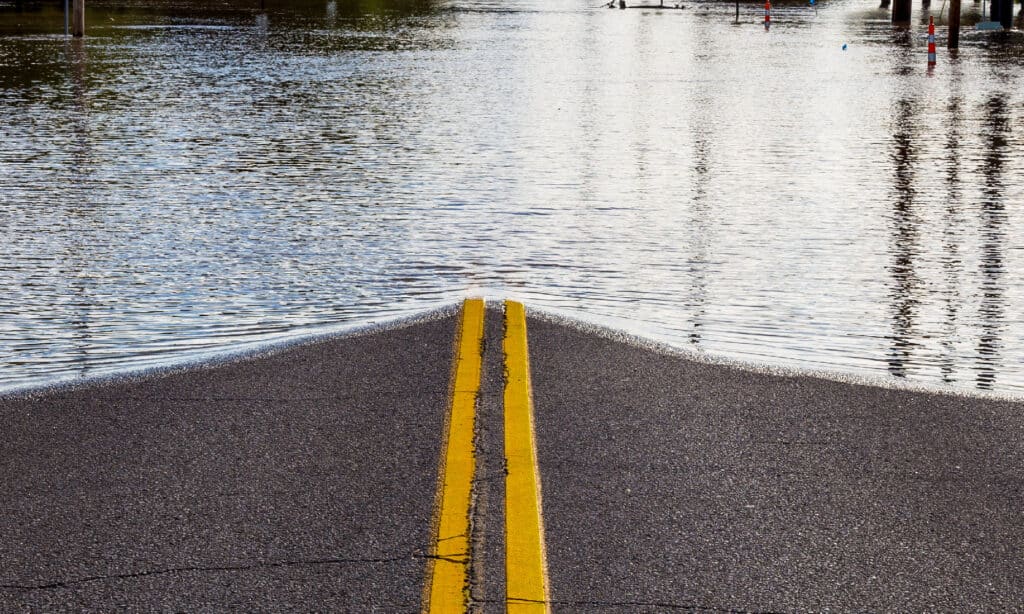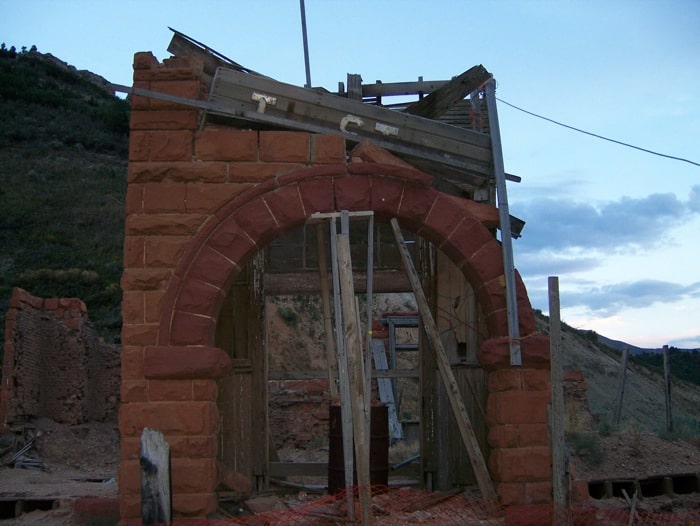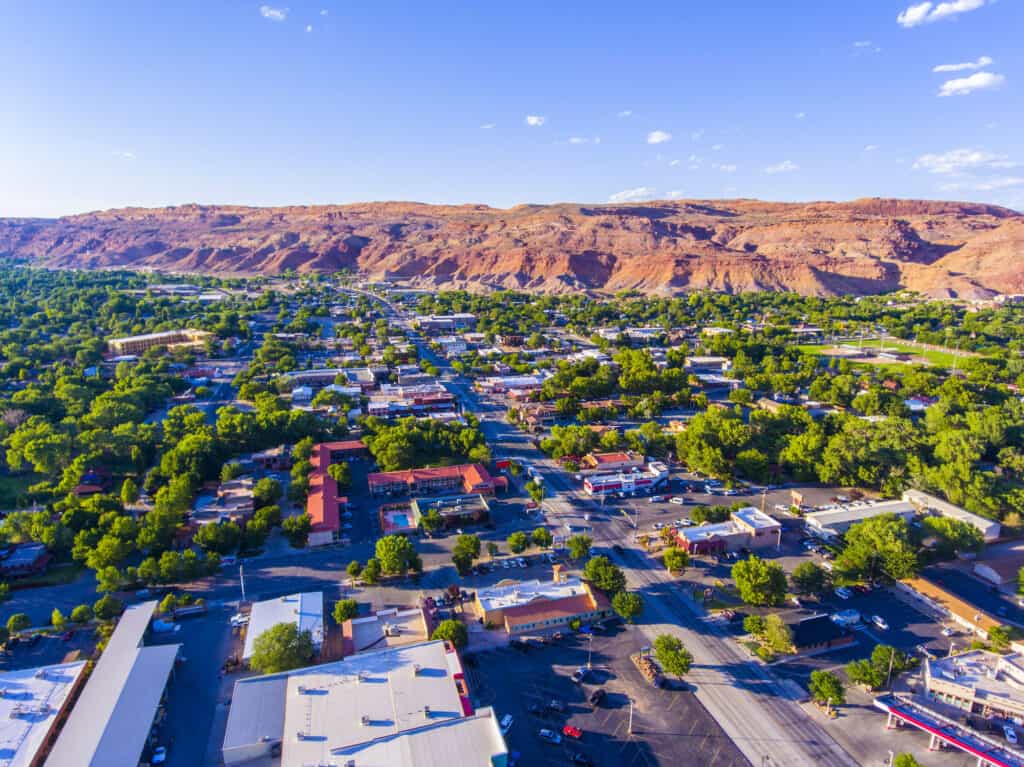Utah is a state with plenty of beautiful, unrestrained wilderness. It is home to Canyonlands National Park, Arches National Park, Bryce Canyon National Park, and Zion National Park, in addition to state, county, and city parks. There are tons of canyons to explore, but that becomes dangerous when the risk of flash floods is near. Since 1970, deaths from flash floods in Utah have been on the rise due to a rise in the popularity of canyoneering. A flash flood can hit a slot canyon, a narrow canyon with high walls, minutes or hours after heavy rainfall.
However, the rain does not have to happen near you. You may not even be aware of the flash flood danger. When rain happens in a heavily rocky area, the water simply runs down. So, if it rains at any higher elevation than where you are, you could be at risk for a flash flood in a canyon. Slot canyons are particularly risky because there is no way to escape quickly. Other types of canyons may have sloped walls to climb, ledges, or even caves. But slot canyons typically have sheer walls that would not be possible to scale quickly in an emergency.
How to Stay Safe from Flash Floods While Hiking Utah’s Canyons
Always check the weather if you plan to hike in a canyon in Utah. National parks usually have flash flood forecasts that help to predict danger daily. They will also close popular canyon hikes, like The Narrows at Zion National Park, if the risk of a flash flood is too high.
If you are hiking a canyon, be aware of the flash flood signs, including:
- When it starts to rain
- If you see storm clouds in the distance
- increase in the water movement
- sudden rise in water level
- The water quickly becomes more muddy or cloudy
- When there is suddenly more debris in the water
- When you hear water rushing
If you notice any of these signs, get to higher ground immediately. Even getting a few feet higher can help to save your life. Permits are required for most canyon hikes at Utah’s National Parks, so rangers know if people get stuck. If you get stuck in a canyon at a national park, stay in a safe place. Rangers will rescue you, but they must wait until it is safe for them to enter the canyon.
The Most Terrifying Flash Floods in Utah
1. The Deadliest: 2015 Hildale & Zion Flood

The flash floods in Hildale and Zion took the lives of at least 40 people.
©Utah National Guard, 2-222nd Field Artillery / public domain – License
On September 14, 2015, multiple thunderstorms rolled through southern Utah. This led to flash floods in the small town of Hildale on the border of Utah and Arizona, as well as in Zion National Park. Twenty people died in these floods, including 10 children. Most deaths were in Utah, but one person also died in Arizona. After the first storm, a group of 16 people caught outside in Hildale tried to take refuge from the flooding in two large vans.
However, the two vans were washed away when the second storm started. Three people in the vans survived. However, 13 people died, including three women aged 27, 28, and 30. The other victims were children. During the same storm, hikers exploring Keyhole Canyon in Zion National Park were overcome by flash flooding that happened quickly before the hikers could reach higher ground. All seven of the experienced canyoneers died.
2. The 1997 Antelope Canyon Flash Flood Disaster

Only the guide of the 12 hikers survived the flood.
©iStock.com/KSwinicki
On August 12, 1997, a group of 12 international hikers explored the Antelope Canyon, which crosses the Arizona/Utah border. Without warning, they were swept away by a 10-foot wall of water. They were washed four miles down the canyon. The canyon is only three feet wide in some places, meaning the hikers were likely tossed harshly against the rocks by floodwaters, adding to the danger. The flood was caused by a storm 15 miles away. It’s possible the hikers didn’t even know they were in danger until it was too late. Only one of the hikers survived the tragedy.
3. 1983 Thistle Flood

Thistle became a ghost town after the flooding.
©Jenny Bauman / CC BY-SA 2.0 – License
In 1983, a large landslide blocked the Spanish Fork River. 65,000 acre-feet of water backed up behind the blockage, flooding the small town of Thistle. All 200-300 residents were evacuated. The whole town was destroyed. The huge flood completely demolished most structures. A few remnants remain and now Thistle is a ghost town. The former residents had to relocate after the flood completely, but many remained in the general area.
4. Moab’s 2022 100-Year Flood

Luckily, no life was lost in this combination of rainfall and flooding.
©Wangkun Jia/Shutterstock.com
In August 2022, more than an inch of rain fell over the parched desert landscape in and around Moab, Utah, in just 20 minutes. The ground was already inundated from other storms in previous weeks. One restaurant that was full on the night the flooding started, August 20, reported that water started coming through the door. They looked outside and saw about two feet of water outside. Water was flowing down the streets of the small city like a river. People in the restaurant and other Moab businesses were stranded, and now the cleanup must begin.
Nearby in beautiful Canyonlands National Park, hikers became stranded. Luckily no deaths occurred. Everyone was able to find higher ground. The same storm caused 200 hikers to get stranded in Carlsbad Caverns in New Mexico, and put river rafters in danger in the Grand Canyon.
This rain storm and the subsequent flood was a 100-year event, meaning it has a 1 in 100 chance of occurring in any given year.
Up Next:
- 10 Breathtaking Mountains In Utah
- 3 Terrifying Flash Floods In Colorado
- What Is a Flash Flood? The Deadly Phenomenon Explained
- The Great Flood of 1993: Here’s What Happened to the Mississippi River
- The Deadliest Natural Disasters of All Time
The photo featured at the top of this post is © Dark_Side/Shutterstock.com
Sources
- Utah National Park Trips, Available here: https://www.myutahparks.com/basics/weather-seasons/flash-floods/
- The Salt Lake Tribune, Available here: https://www.sltrib.com/news/2022/08/24/hikers-seek-refuge-canyonlands/
- (1970)
FAQs (Frequently Asked Questions)
Why are flash floods dangerous in Utah?
Utah has many canyons that hikers like to explore. Slot canyons are particularly risky because there is no way to escape quickly. Other types of canyons may have sloped walls to climb, ledges, or even caves. But slot canyons typically have sheer walls that would not be possible to scale quickly in an emergency.
How can you stay safe from flash floods in a Canyon?
If you do plan to hike in a canyon in Utah, always check the weather. National Parks usually have flash flood forecasts that help to predict danger daily. They will also close popular canyon hikes, like The Narrows at Zion National Park, if the risk of a flash flood is too high.
If you are hiking a canyon, be aware of the flash flood signs including:
- It starts to rain
- You see storm clouds in the distance
- The water starts to move faster
- The water level raises
- The water quickly becomes more muddy or cloudy
- There is suddenly more debris in the water
- You hear water rushing
If you notice any of these signs, get to higher ground immediately. Even getting a few feet higher can help to save your life. Permits are required for most canyon hikes at Utah’s National Parks, so rangers know if people get stuck. If you do get stuck in a canyon at a National Park, stay put in a safe place. Rangers will rescue you but they must wait until it is safe for them to enter the canyon.
What was the deadliest flash flood in Utah?
The 2015 Hildale and Zion National Park Flood is the deadliest flash flood in Utah. 20 people died.
How did Thistle, Utah become a ghost town?
In 1983, a large landslide blocked the Spanish Fork River. 65,000 acre-feet of water backed up behind the blockage, flooding the small town of Thistle. All 200-300 residents were evacuated. The whole town was destroyed. Most structures were completely demolished by the huge flood. A few remnants remain and now Thistle is a ghost town. The former residents had to completely relocate after the flood, but many remained in the general area.
How many people died in the 1997 Antelope Canyon Flash Flood Disaster?
11 people died in the 1997 Antelope Canyon disaster.
Thank you for reading! Have some feedback for us? Contact the AZ Animals editorial team.






